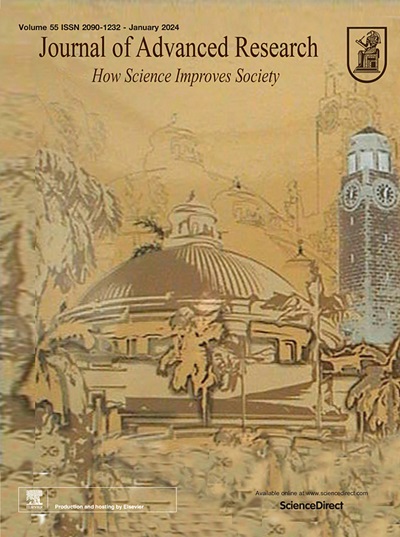新型GLA基因错义突变在Fabry病中的致病性及咪加拉司他的治疗作用
IF 13
1区 综合性期刊
Q1 MULTIDISCIPLINARY SCIENCES
引用次数: 0
摘要
法布里病是一种罕见的x连锁遗传性溶酶体贮积症,由GLA基因突变引起,影响多个器官。然而,关于新发现的突变的致病性的功能验证数据和对不同突变位点的米加拉司他干预效果的研究缺乏。目的探讨新发现的GLA基因错义突变在Fabry病中的致病性及咪加拉司他对新发现突变位点疾病模型的干预作用。方法回顾性筛选163例Fabry病患者临床资料中新发现的突变,通过临床资料和谱系分析、生物信息学预测、蛋白结构建模预测和细胞实验等方法探讨突变的致病性。此外,本研究进一步评估了咪加司他干预对这些新发现的突变位点的影响,并结合良好实验室规范人胚胎肾293体外细胞实验分析(GLP HEK assay)提出的适用于DGJ的GLA基因突变的可适应突变标准。结果共检测到95个不同的突变位点,其中新发现的突变位点13个,明确致病突变9个(无义突变、移码突变和大片段缺失),错义突变4个。变体c.102 T 祝辞 ,c.130 T 祝辞 G和c.778G 祝辞 T显示高致病性(致病性预测评分:9),表明重大突变蛋白空间构象的变化,而c.194G 祝辞 显示低致病性(分数:5),表明温和对蛋白质构象的影响。细胞功能实验显示突变细胞中GLA基因mRNA、α-Gal A蛋白表达和酶活性水平显著降低。米加拉司他干预显著使α-Gal A蛋白表达和酶活性正常化,特别是在c.194G >; A变异中,符合米加拉司他的可调节突变标准。结论本研究报告了13个新发现的Fabry病GLA基因突变位点,包括9个明确的致病突变和4个本研究确认的致病错义突变,从而丰富了Fabry病基因突变数据库。米加拉司他干预改善了这些突变模型中的酶活性,特别是在蛋白质结构和功能发生微小变化的病例中,这有望指导临床治疗。本文章由计算机程序翻译,如有差异,请以英文原文为准。

Pathogenicity of novel GLA gene missense mutations in Fabry disease and the therapeutic impact of migalastat
Introduction
Fabry disease, a rare X-linked hereditary lysosomal storage disorder caused by mutations in the GLA gene, affecting multiple organs. However, functional validation data on the pathogenicity of newly identified mutations and research on the effects of migalastat intervention at different mutation sites is lacking.Objectives
To explore the pathogenicity of newly identified missense mutations in the GLA gene in Fabry disease and the intervention effect of migalastat on the disease model of newly identified mutation sites.Methods
We retrospectively screened newly identified mutations from the clinical data of 163 patients with Fabry disease, investigated the pathogenicity of these mutations by clinical data and pedigree analysis, bioinformatics prediction, protein structure modeling prediction, and cell experiment. Additionally, this study further assessed the effects of migalastat intervention on these newly identified mutation sites combined with the amenable mutation criteria for GLA gene mutations applicable to DGJ proposed by the Good Laboratory Practice Human Embryonic Kidney 293 in vitro cell experiment analysis (GLP HEK assay).Results
Ninety-five different mutation sites were detected, comprising 13 newly identified mutation sites with nine definite pathogenic mutations (nonsense mutations, frameshift mutations and large fragment deletions) and four missense mutations. The variants c.102 T > A, c.130 T > G, and c.778G > T showed high pathogenicity (pathogenicity prediction score: 9), suggesting significant spatial conformation changes in the mutated protein, while c.194G > A showed a low pathogenicity (score: 5), indicating a mild impact on protein conformation. Cellular functional experiments revealed significantly reduced GLA gene mRNA, α-Gal A protein expression, and enzyme activity levels in the mutant cells. Migalastat intervention significantly normalized α-Gal A protein expression and enzyme activity, particularly in the variant c.194G > A, meeting amenable mutation criteria for migalastat.Conclusion
This study reports 13 newly identified mutation sites in the GLA gene for Fabry disease, including nine definite pathogenic mutations and four missense mutations confirmed to be pathogenic in this study, thereby enriching the Fabry disease gene mutation database. Migalastat intervention improved enzyme activity in these mutation models, especially in cases with minor changes in protein structure and function, which are expected to guide clinical treatment.求助全文
通过发布文献求助,成功后即可免费获取论文全文。
去求助
来源期刊

Journal of Advanced Research
Multidisciplinary-Multidisciplinary
CiteScore
21.60
自引率
0.90%
发文量
280
审稿时长
12 weeks
期刊介绍:
Journal of Advanced Research (J. Adv. Res.) is an applied/natural sciences, peer-reviewed journal that focuses on interdisciplinary research. The journal aims to contribute to applied research and knowledge worldwide through the publication of original and high-quality research articles in the fields of Medicine, Pharmaceutical Sciences, Dentistry, Physical Therapy, Veterinary Medicine, and Basic and Biological Sciences.
The following abstracting and indexing services cover the Journal of Advanced Research: PubMed/Medline, Essential Science Indicators, Web of Science, Scopus, PubMed Central, PubMed, Science Citation Index Expanded, Directory of Open Access Journals (DOAJ), and INSPEC.
 求助内容:
求助内容: 应助结果提醒方式:
应助结果提醒方式:


